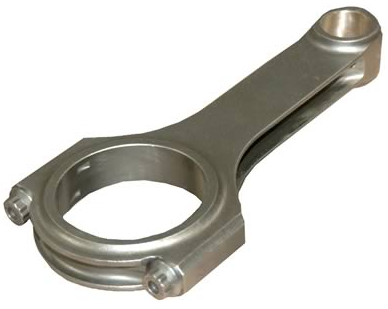Bent connecting rods in an internal combustion engine are often caused by extreme force or pressure that exceeds the rod’s structural capacity. Such scenarios can arise from circumstances like engine knock (detonation), hydrostatic lock (fluid getting into the combustion chamber), and mechanical over-revving.

Factors Leading to a Bent Connecting Rod
Engine Knock (Detonation)
Engine knock, or detonation, is a condition where the fuel-air mixture in the combustion chamber ignites more than once in quick succession. This can cause a dramatic increase in pressure within the combustion chamber. If this pressure is too high for the connecting rod to withstand, it can cause the rod to bend.
Detonation is often a result of using low-octane fuel in high-compression engines, incorrect ignition timing, or running an engine too hot. Regular maintenance and tuning of the engine can help prevent conditions that lead to detonation.
Hydrostatic Lock
Hydrostatic lock occurs when a significant volume of incompressible fluid, typically water, enters the combustion chamber. When the piston attempts to compress this liquid during its upward stroke, the immense resistance can result in a bent or even broken connecting rod.
This scenario typically happens when a vehicle goes through a deep puddle or floodwater, and water gets sucked into the engine through the air intake. Ensuring that the air intake is well positioned and sealed can reduce the risk of hydrostatic lock.
Mechanical Over-Revving
Mechanical over-revving refers to the engine exceeding its maximum designated RPM (revolutions per minute). This can occur if a manual-transmission vehicle is downshifted too soon or the clutch is released too quickly. The excessive speed can create forces that exceed the connecting rod’s strength, leading to it bending.
Drivers should be aware of their engine’s RPM limits and change gears appropriately to prevent over-revving.
| Cause | Description |
|---|---|
| Engine Knock | Multiple ignition points in the combustion chamber causing excessive pressure |
| Hydrostatic Lock | Fluid in the combustion chamber causing immense resistance to the piston stroke |
| Mechanical Over-Revving | Engine exceeding its maximum designated RPM |
Consequences and Detection of a Bent Connecting Rod
A bent connecting rod can have severe consequences on the performance and health of an engine. It can lead to reduced power, increased fuel consumption, abnormal noise, and potential catastrophic engine failure.
Detecting a bent connecting rod can be challenging as it generally requires disassembly of the engine. However, symptoms like unusual engine noise, vibration, and reduced engine performance can indicate potential issues with the connecting rods.
In case of suspicion, a professional mechanic should inspect the vehicle. If a bent rod is found, it needs to be replaced immediately to prevent further engine damage.